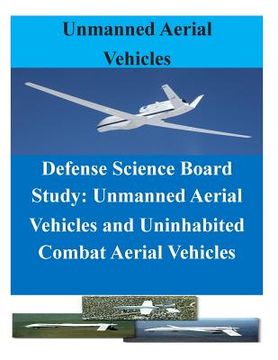Defense Science Board Study: Unmanned Aerial Vehicles and Uninhabited Combat Aerial Vehicles
Synopsis "Defense Science Board Study: Unmanned Aerial Vehicles and Uninhabited Combat Aerial Vehicles"
Lessons from recent combat experiences in Kosovo, Afghanistan and Iraq have shown that UAVs can provide vastly improved acquisition and more rapid dissemination of Intelligence, Surveillance and Reconnaissance (ISR) data. They are one of the principal contributors to successful outcomes for the United States, in these campaigns. The benefits and promise offered by UAVs in surveillance, targeting and attack have captured the attention of senior military and civilian officials in the Defense Department (DoD), members of Congress, and the public alike. Indeed, these recent combat operations appear to indicate that unmanned air systems have at last come of age.There is no longer any question of the technical viability and operational utility of UAVs. The success of UAVs in recent conflicts represents a historic opportunity to exploit the transformational capabilities inherent in UAVs/Uninhabited Combat Aerial Vehicles (UCAVs). Transformation is not a term, it is a philosophy. Transformation is a predisposition to exploring adaptations of existing and new systems, doctrine and organizations. True transformation is not the result of a one-time improvement, but of sustained and determined effort. For example, the American forces used multiple Predator UAVs during Operation Iraqi Freedom (OIF) to provide a far more comprehensive operational perspective across the theater to the Combined Air Operations Center by integrating the Predator common operating picture with the Falcon View mission planning system.There is now another mission imperative and that is distance. During this review the new concept of Global Persistence Surveillance has specifically focused on the contributions of UAVs and UCAVs. During OIF Predator UAVs also enabled time-critical targeting via streaming video to strike platforms. Likewise one Global Hawk in the Iraqi theater from 8 March 03 to 23 April 03 accounted for 55% of the Time Sensitive Targets generated to kill air defense equipment. In 16 missions, Global Hawk located 13 Surface-to-Air Missile (SAM) batteries, 50 SAM launchers, over 70 SAM transport vehicles and over 300 tanks. Notwithstanding the success of UAVs in OIF, UAVs have not been fully "embedded" in current Concepts of Operations (CONOPS) or valued with effects driven methodology. Future UAV programs must be conceived with this mix in mind, i.e. predefined operational concepts and effects driven methodology. UAVs are ideal systems to support the emerging joint character and the asymmetric nature of warfare.The Task Force feels it is time for DoD and the Services to move forward and make UAVs and UCAVs an integral part of the force structure, not an "additional asset". To do so requires appropriate planning, appropriate budgeting, and continued management attention of DoD and Service leadership. The DoD and the Services have already started to integrate UAVs into their force structure plans. Currently there are UAV plans and roadmaps within the DoD and Services and the FY 04 budget also shows substantial increases in funding of UAV programs. While progress has been made in planning and funding for UAVs, the Services need to move from deconfliction to integration to interdependence. UAV capabilities should be assessed in the larger context of the Global Persistent Surveillance. UAVs can ideally complement current architectures for Future Imagery Architecture, New Imagery System, and Space Based Radar.This study identifies steps the Department of Defense and Armed Services can take to field a robust UAV and UCAV capability. The recommendations in his executive summary indicate the Task Force's top level recommendations. Additional recommendations can be found in the body of the report. The Task Force's findings and recommendations fall into eight subject areas and are described in this executive summary in order of importance.

